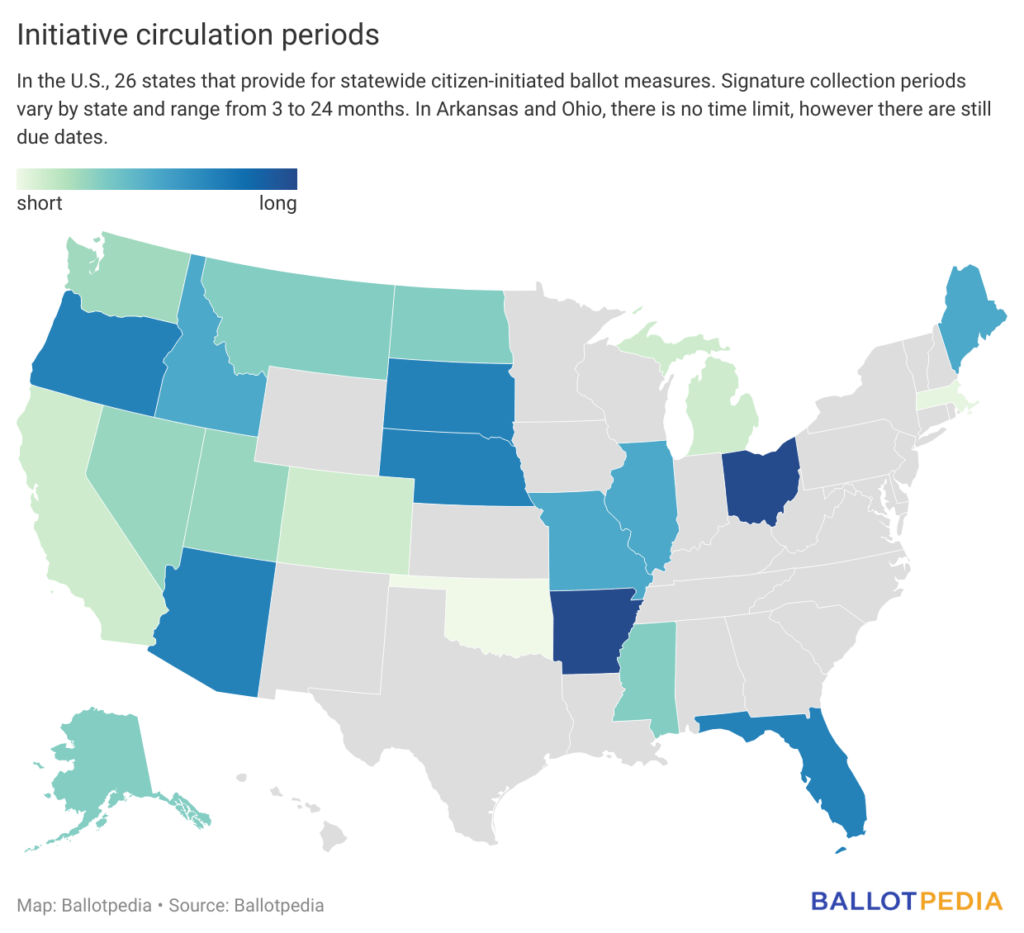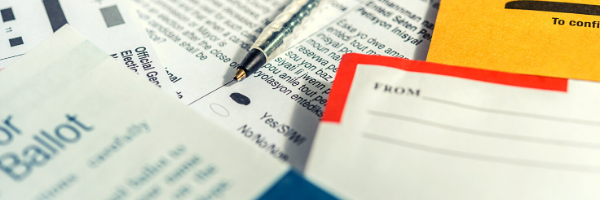When proponents of a citizen-initiated ballot measure collect signatures to verify the measure for the ballot, each state has a time frame for when proponents can collect signatures. This time frame is known as a circulation period, or the length of the signature-gathering period. The length of the circulation period varies between the 26 states that provide for statewide citizen-initiated ballot measures.
The circulation period varies between three months and two years, except for in two states—Arkansas and Ohio. There is no time limit on how long signatures can be collected for in those two states.
The state with the shortest circulation period is Oklahoma, which is 90 days. In Oklahoma, state officials recommend filing a proposed initiative during the first months preceding the targeted election year due to the two periods during which challenges may be filed against an initiative.
Four states—California, Colorado, Michigan, and Washington—have a circulation period of 180 days or six months. In Michigan, signatures older than 180 days at the time of filing are considered invalid. In addition, any signatures collected before a Nov. election where a governor is elected, cannot be submitted after that election. In Washington, Initiatives to the People have a circulation period of 6 months, while Initiatives to the Legislature have a circulation period of about 10 months.
Three states—Utah, Nevada, and Washington—also have a circulation period of about 10 months. Utah’s circulation period is 316 days, and Nevada’s is 291 days for constitutional initiatives and 316 days for statutory initiatives.
Four states—Alaska, Mississippi, Montana, and North Dakota—have a circulation period of one year, or 365 days.
Four states—Maine, Missouri, Illinois, and Idaho—have a circulation period of 18 months. In Maine, signatures are valid for one year after the date they were signed. However, signatures may be collected up to 18 months after the petition form is furnished by the secretary of state.
Five states—Arizona, Florida, Nebraska, Oregon, and South Dakota—have a circulation period of two years.
Meanwhile, in Arkansas and Ohio, there is no time limit. In Arkansas, signatures must be submitted four months before the election at which the measure is to appear, and there is no law prohibiting proponents from starting the signature-gathering process before a certain date. Ballot titles by the attorney general are written for the election year they're targeting, so if an initiative does not qualify for the election they are targeting, the measure will have to be filed again.
In Ohio, signatures for initiated constitutional amendments are due at least 125 days before the general election, while signatures for initiated state statutes are collected and submitted in two rounds. The first round is due 10 days before the annual legislative session begins on the first Monday in January, and the second round is due within 90 days following the passage of the legislature's four-month deadline to address the initiative. Ohio does not have a legal circulation period, so if proponents of an initiative miss the deadline, they can continue to collect for the following election.

For more laws regarding the initiative process, click here.


